This page contains bebop scale guitar tab, fingerboard diagrams, notation and information. Using these you'll be able to play all of the forms of this useful scale – all over the neck.
- Learn how to play more scales at our main scale page: Guitar Scales.
- Download your copy of our printable guitar scales pdf ebook: Guitar Scales Chart Book.
- Teaching yourself jazz guitar? Check out our review of jazz guitar books: Best Jazz Guitar Books.
Bebop Scale Guitar Variations
There are three main types of bebop scale: dominant, minor (Dorian), and major. We'll cover all three on this page.
The most commonly used of these is the dominant – if you hear someone talk about 'the bebop scale', they'll probably be referring to the dominant bebop scale.
Bebop Scale Origins
Bebop scales allow jazz improvisors to play fluent scale lines in which chord tones fall on the beat. They are not part of 'strict' musical theory – rather, they have evolved out of the kind of lines jazz musicians in the Bebop era – such as Charlie Parker – were playing.
Jazz musicians often add extra chromatic notes into scales in order to hit the desired chord tones or 'target' notes at the end of a phrase. Bebop scales are essentially just one way of doing this.
Bebop Scale Construction
Bebop scales contain one more note than 'standard' major scales (or modes of major scales). If you play an ascending or descending bebop scale in eighth notes (quavers) against a 4:4 rhythm, and then play a major scale over the same rhythm, you will be able to hear how much smoother the bebop scale sounds.
The chromatic notes in the scale makes it sound much 'jazzier' than the standard major or Mixolydian scale.
Dominant Bebop Scale
In the fretboard diagrams below, the tonic notes of the scale are shown as white circles. The other notes of the scale are shown as black circles.
Fretboard diagram 1 corresponds to the tab below, but also shows additional notes below and above the root notes. These notes can be used to extend the scale into other octaves.
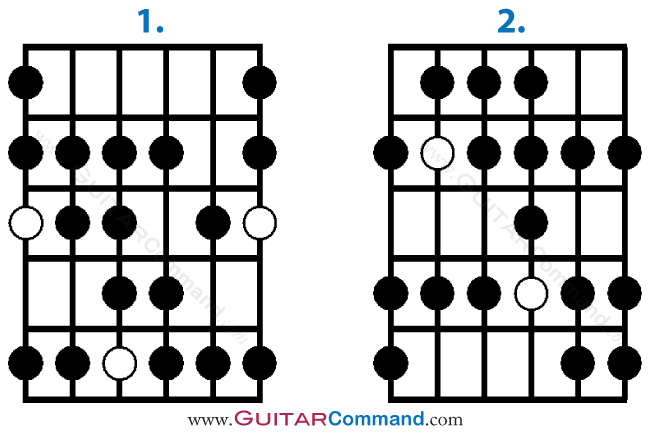
Dominant Bebop Scale Guitar
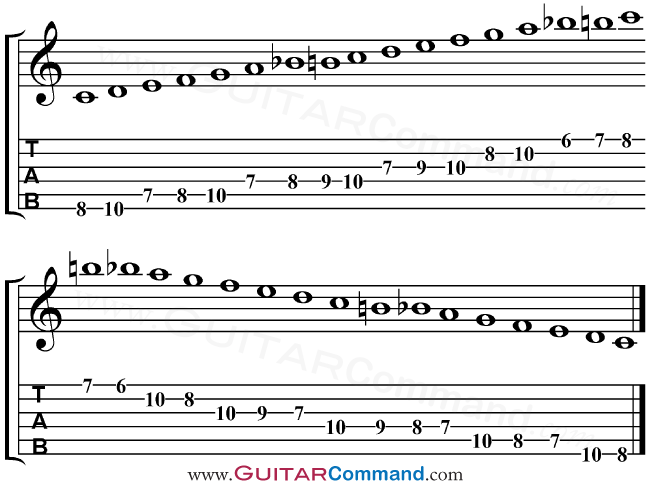
Another way of playing this scale is shown below:
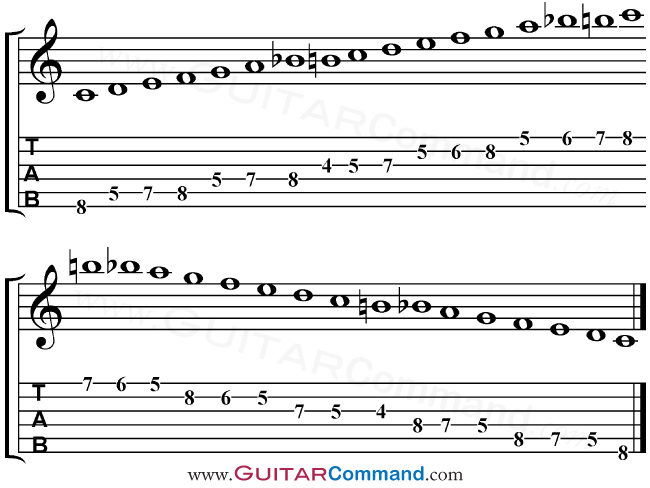
The dominant bebop scale is a Mixolydian scale with an added major 7th note. Therefore, a C bebop scale (as shown in the examples above) is basically a C Mixolydian scale with an added B natural.
The dominant bebop scale can alternatively be thought of as a major scale with a minor seventh note added.
The dominant bebop scale can be used to play jazz lines over a dominant chords (e.g. C7, C9, C13, etc.).
Minor Bebop Scale
Minor bebop scales can be used to improvise over minor 7th chords, such as those found in 2 5 1 progressions.
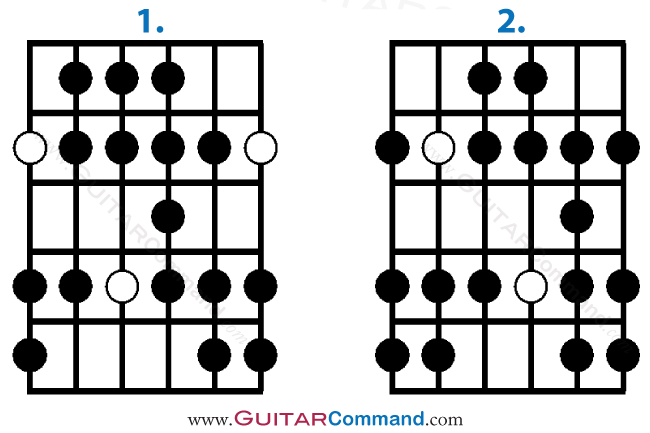
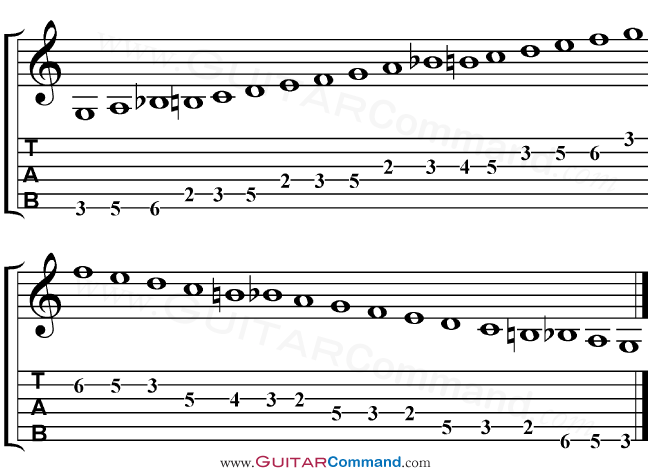
There are two types of minor bebop scale. The first type (shown above) is the most common. It's a Dorian scale with an added major third note (i.e. a G Dorian with an added B natural).
Another minor bebop scale is a Dorian scale with an added major seventh note (i.e. a G Dorian with an added F#). One way of playing this version of a minor bebop scale is shown below:
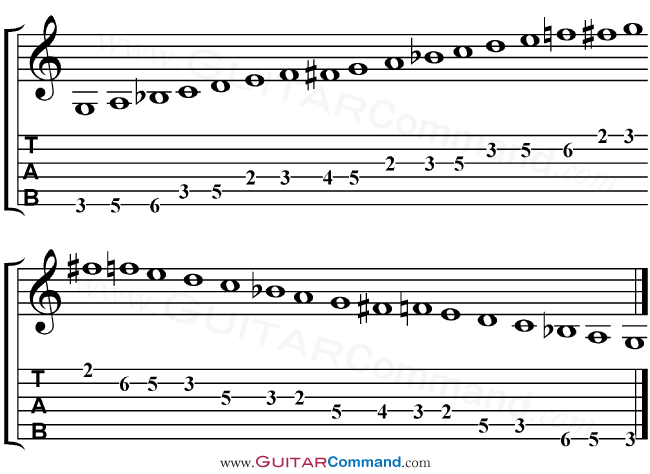
Either version of the minor bebop scale can be used to solo over minor chords.
Bebop Chords And 2 5 1 progressions
Bebop scales can be used to create flowing lines over 2 5 1 progressions. Lines created with bebop scales can also be extended or combined with other scales or arpeggios.
You may have noticed that the G minor bebop scale (version 1) is essentially the same scale as the C dominant bebop scale. Both scales contain the same notes, they just start at different positions.
Therefore, you can play either the dominant bebop scale, or version I minor bebop scale over both the ii and V of a 2 5 1 progression.
Major Bebop Scales
Major bebop scales are used to create smooth-sounding lines, in which chord tones fall on the beat, over major and major-type chords (e.g. Major, Maj7, Maj6, etc.).
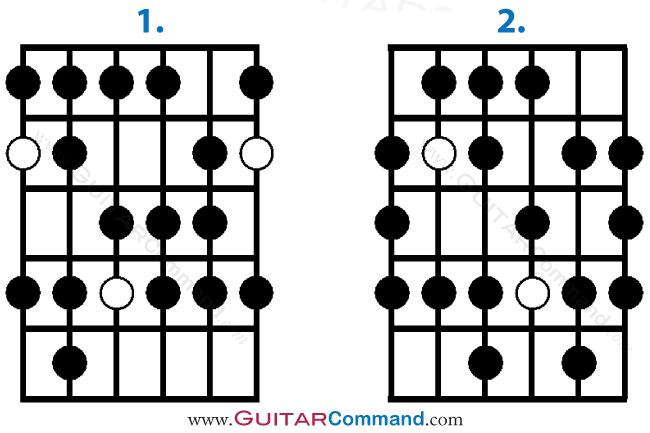
Major bebop scales are essentially major scales with added sharpened fifth notes. In the Bb major bebop scales below, the additional note is a D# (notated in the examples as an Eb).
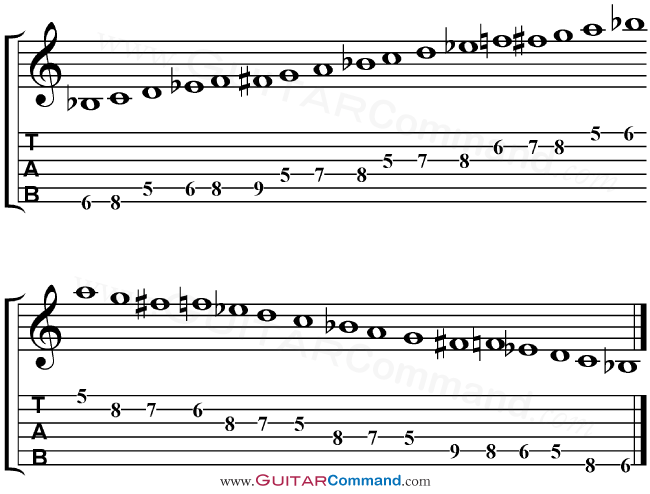
Alternative fingering:
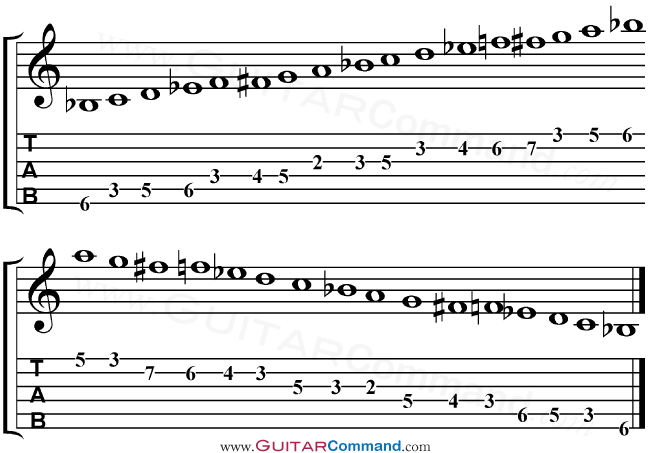
Bebop Scales Guitar Conclusion
Experiment with bebop scales by creating your own lines playing over single chord vamps and 2 5 1 progressions.
Practice starting lines on chord tones, and on non-chord tones, on and off the beat. Get a feel for how the scales flow, and play around with them – switch directions when playing the scales (i.e. play some ascending notes in a descending line), add extra chromatic notes, etc.
Remember that bebop scales aren't strictly defined. Any 'extra' chromatic notes can be added to a standard scale in order to end a line on the desired note.
As you get acquainted with bebop scales you'll begin to realise how much the timing and feel of licks and runs can be improved by the inclusion of the extra chromatic note – it's one of the most commonly used techniques in jazz guitar playing.
- Learn how to play more scales at our main scale page: Guitar Scales.
- Download your copy of our printable guitar scales pdf ebook: Guitar Scales Chart Book.
- Teaching yourself jazz guitar? Check out our review of jazz guitar books: Best Jazz Guitar Books.
- Play along to a range of Guitar Backing Tracks.

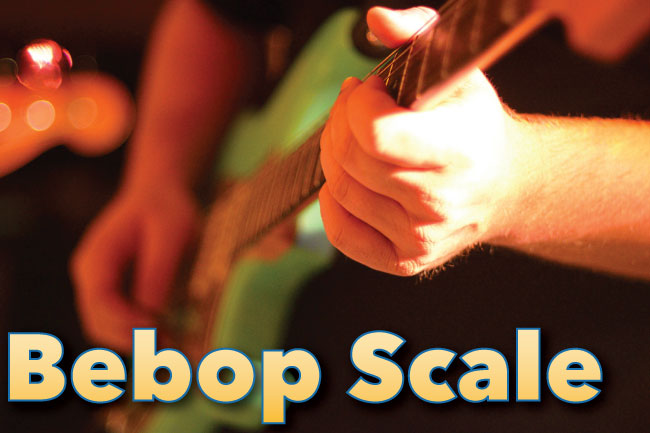


Hey there
I was searching for some Japanese sounding scales and stumbled onto this goldmine of information. Very much appreciated and I’ll be sure to point fellow musicians towards this page as a great source of inspiration. Thanks for making this enormous effort to keep us up to date.